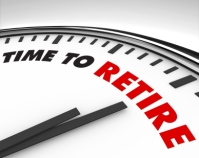The Ricks Report
September 4, 2012
The Markets
Now that the traditional end to summer has arrived, things might heat up on Wall Street as traders return to their stations and face a host of pressing risks.
The omnipresent Mohamed El-Erian of PIMCO took to the airwaves on Bloomberg last week and laid out his list of the four major risks facing the global economy:
- The looming fiscal cliff – in which automatic tax increases and spending cuts are set to take effect at the first of the year in the U.S.
- The continuing sovereign debt crisis in Europe.
- Geopolitical risk in the Middle East and elsewhere.
- The economic slowdown and pending political transition in China.
Source: Bloomberg
One could argue that the first two on the list are within the power of western politicians to solve without causing global harm. Of course, so far, politicians have engaged in a game of “kick the pressing problems down the road.” However, sooner or later – and likely sooner rather than later – that road will end. Only time will tell if our politicians solve the problems before they hit a dead end.
The last two are trickier. Geopolitical risks are always unpredictable, particularly in the highly combustible Middle East. And, China, that’s another wildcard. The country’s economy is clearly slowing down, albeit from a very high rate compared to American standards. The upcoming once-in-a-decade political transition is also a cause for reflection as the Bo Xilai affair disrupted what party officials hoped would be a smooth political transition.
Yet, despite these four risks, the U.S. stock market is still near a post-crisis high. The fact is, there’s always something to worry about and sometimes the stock market defies expectations and keeps climbing the “wall of worry.”
|
Data as of 8/31/12 |
1-Week |
Y-T-D |
1-Year |
3-Year |
5-Year |
10-Year |
| Standard & Poor’s 500 (Domestic Stocks) |
-0.3% |
11.9% |
15.4% |
11.3% |
-0.9% |
4.8% |
| DJ Global ex US (Foreign Stocks) |
-1.0 |
4.1 |
-5.4 |
1.3 |
-6.0 |
6.0 |
| 10-year Treasury Note (Yield Only) |
1.6 |
N/A |
2.2 |
3.4 |
4.5 |
4.0 |
| Gold (per ounce) |
-1.1 |
4.7 |
-9.1 |
20.0 |
19.7 |
18.1 |
| DJ-UBS Commodity Index |
0.5 |
3.8 |
-11.2 |
5.1 |
-2.5 |
3.6 |
| DJ Equity All REIT TR Index |
0.8 |
17.5 |
20.4 |
23.4 |
3.4 |
11.2 |
Notes: S&P 500, DJ Global ex US, Gold, DJ-UBS Commodity Index returns exclude reinvested dividends (gold does not pay a dividend) and the three-, five-, and 10-year returns are annualized; the DJ Equity All REIT TR Index does include reinvested dividends and the three-, five-, and 10-year returns are annualized; and the 10-year Treasury Note is simply the yield at the close of the day on each of the historical time periods.
Sources: Yahoo! Finance, Barron’s, djindexes.com, London Bullion Market Association. Past performance is no guarantee of future results. Indices are unmanaged and cannot be invested into directly. N/A means not applicable.
DOES STRONG ECONOMIC GROWTH ALWAYS LEAD TO RISING STOCK PRICES? Typically, strong economic growth translates into rising corporate profits. Rising profits, over time, tend to lead to rising stock prices – or so one would think.
Consider China. For many years we’ve heard how China is supplanting the U.S. as a manufacturing and economic powerhouse. And, in many respects, it’s true. Between 1989 and 2012, China’s gross domestic product rose at an annual rate of 9.3 percent – dramatically above the growth rate in the U.S. – according to Trading Economics. Today, China has the world’s second largest economy and it’s projected to overtake the U.S. in just four years, according to the International Monetary Fund as reported by BusinessWeek.
So, yes, China is an economic powerhouse. But, has their economic growth translated into stock price growth?
Let’s go back about 12 years, November 10, 2000 to be exact, and see how the Chinese stock market has performed as measured by the Shanghai Stock Exchange Composite Index. The Shanghai Composite is a capitalization-weighted index that tracks the daily price performance of all A-shares and B-shares listed on the Shanghai Stock Exchange.
Back on November 10, 2000, the Shanghai index closed at 2,047, according to data from Yahoo! Finance. Now, almost 12 years later, where do you think the Shanghai index closed last week?
Shockingly, the Shanghai index closed at 2,047 – exactly the same price as it was nearly 12 years ago! This flat stock market performance occurred despite the fact that the Chinese economy grew by more than 500 percent between 2000 and 2011, according to The World Bank.
Now, before we conclude there’s no connection between economic growth and stock prices, we have to go back even further. On December 19, 1990, the Shanghai index was created with a starting value of 100. At last week’s closing price of 2,047, this means the Chinese stock market, as measured by the Shanghai index, has risen more than 1,900 percent between 1990 and 2012. On an annualized basis, that’s more than 14 percent per year – an exceptionally high return.
Okay, after all these numbers, what can we conclude? A couple things:
- Fast economic growth in any given year does not necessarily translate into rising stock prices that year.
- Fast economic growth eventually shows up in stock prices, although some of the growth may be “pulled forward” and “priced in” to stocks well ahead of when the growth actually occurs—as happened in China.
This lack of a linear relationship between economic growth and stock prices is one more variable we have to consider when developing portfolios.
Weekly Focus – Think About It…
“Without labor nothing prospers.”
—Sophocles, ancient Greek playwright
Best regards,
Gregory Ricks












